Food
Buy bread in waxed paper
Buy bread in waxed paper and then lounge about with it while wearing a gown designed by Pauline Trigere.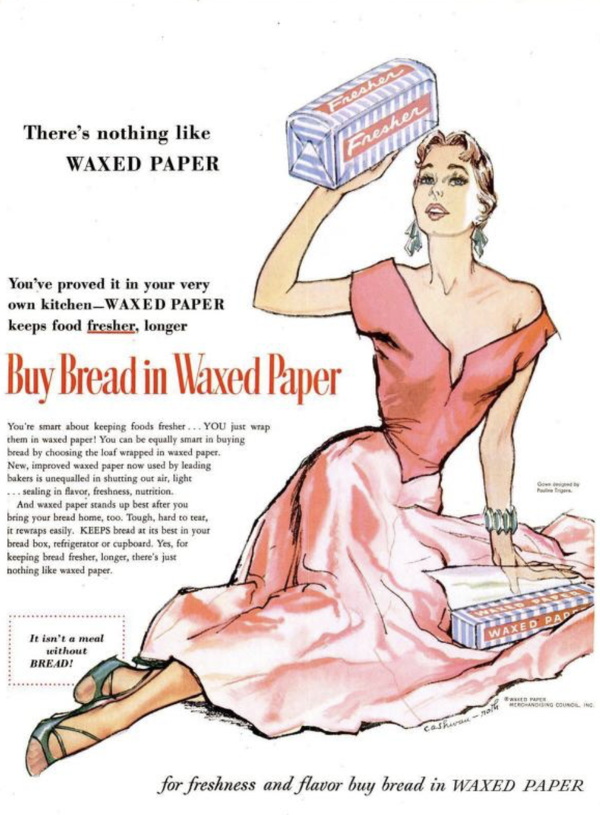
Posted By: Alex - Wed Apr 24, 2024 -
Comments (0)
Category: Fashion, Food, Advertising, 1950s
Humanised Trufood
Make sure your food has been humanised...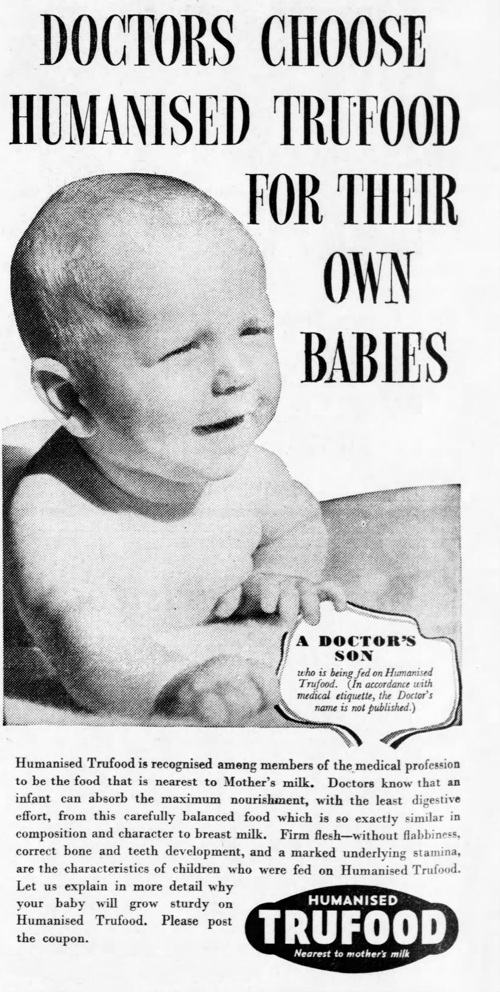
Daily Telegraph - Jan 28, 1937
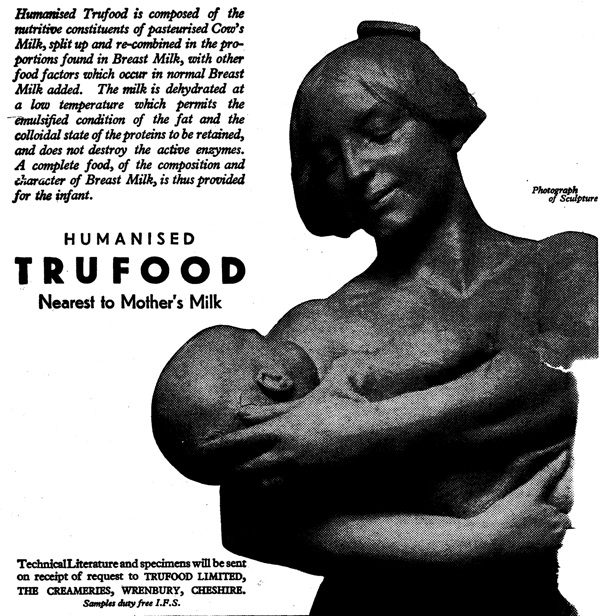
Post-Graduate Medical Journal - June 1935
Posted By: Alex - Sat Apr 06, 2024 -
Comments (6)
Category: Babies, Food, Advertising, 1930s
That’s a Lot of Lobster Rolls
Source.
Posted By: Paul - Mon Mar 25, 2024 -
Comments (0)
Category: Excess, Overkill, Hyperbole and Too Much Is Not Enough, Food, Oceans and Maritime Pursuits, 1920s
Python meat as the food of the future
Python meat is emerging as a new contender for the food of the future.A report recently published in the journal Nature argues that python meat is potentially the most sustainable source of protein because "In terms of food and protein conversion ratios, pythons outperform all mainstream agricultural species studied to date." In other words, pythons convert most of what they eat directly into meat on their body.
The authors also make the case that farming pythons is more ethical than farming chickens or cows because "Pythons don’t have the same cognitive capacity and choose to remain inactive in small confined spaces when they don’t need to find food."
More info: Nature, New Scientist
People on YouTube who have tried python uniformly report that it's chewy. So grinding it up into a burger might be the way to go.
Posted By: Alex - Sat Mar 23, 2024 -
Comments (2)
Category: Food, Farming
You’re the Judge
Posted By: Paul - Sat Mar 23, 2024 -
Comments (0)
Category: Awards, Prizes, Competitions and Contests, Domestic, Food, Advertising, Teenagers, 1960s
Snail Dough Maker
Thankfully it's for making dough to wrap snails in, rather than making dough out of snails.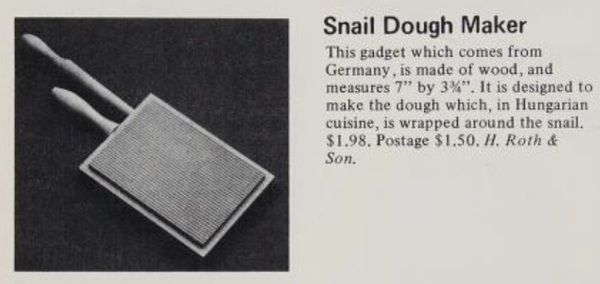
source: Catalog of the Unusual (1973), by Harold H. Hart
Posted By: Alex - Sat Mar 16, 2024 -
Comments (1)
Category: Food, Technology
“The Film-Flam Man” Episode of MULLIGAN STEW
Explanation here.IMDB entry for the episode here.
Posted By: Paul - Fri Mar 01, 2024 -
Comments (0)
Category: Food, Junk Food, Sleaze and Sleazeballs, Television, 1970s
Food from Petroleum
In recent years there's been lots of talk about finding new sources of food (insects, lab-grown meat, etc.) to feed the world. But back in the 1960s researcher Alfred Champagnat had already invented what he thought would be the food of the future: protein from petroleum.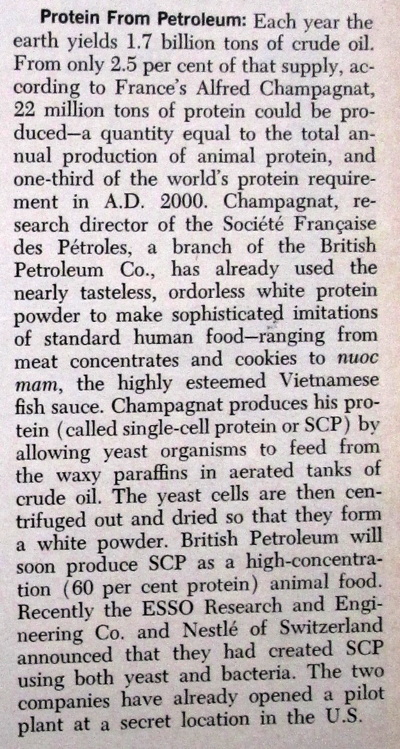
Newsweek - Feb 27, 1967
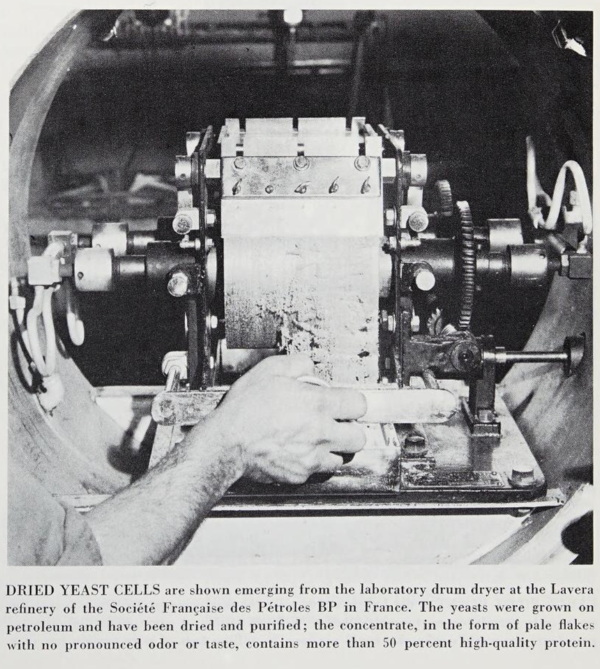
Scientific American - Oct 1965
Champagnat's idea seems to have fallen by the wayside. There's a fairly recent article in Mold magazine that discusses his invention. It simply notes that the food industry had other priorities:
Wikipedia has some more info which suggests that the protein obtained from petroleum wasn't entirely safe to eat:
The Soviets were particularly enthusiastic, opening large "BVK" (belkovo-vitaminny kontsentrat, i.e., "protein-vitamin concentrate") plants next to their oil refineries in Kstovo (1973) and Kirishi (1974). The Soviet Ministry of Microbiological Industry had eight plants of this kind by 1989. However, due to concerns of toxicity of alkanes in SCP [single-cell proteins] and pressured by the environmentalist movements, the government decided to close them down, or convert to some other microbiological processes.
Posted By: Alex - Sun Feb 25, 2024 -
Comments (2)
Category: Food, 1960s
Stan Freberg’s Chun King Commercials
Well-known for his comedy and innovative commercials, Stan Freberg outdid himself for the Chun King campaign.If you go to YouTube, you can see a classic hour of comedy that Freberg did with Chun King as the sponsor.
Posted By: Paul - Sat Feb 24, 2024 -
Comments (1)
Category: Food, Humor, Television, Advertising, 1960s
Miss Frozen Rabbit Meat
In the 1950s there was a brief effort to make rabbit meat a more mainstream part of the American diet. In 1957, this led to the crowning of "Miss Frozen Rabbit Meat," whose job it was to convince housewives to buy more frozen rabbit meat.I know it's possible to get rabbit meat in specialty butcher shops and markets here in the U.S., but I've never seen it in an American supermarket. So the effort to make it more mainstream evidently fizzled.
More info: Lola Mason's imdb page
Related Post: Recipes for Cooking Domestic Rabbit Meat
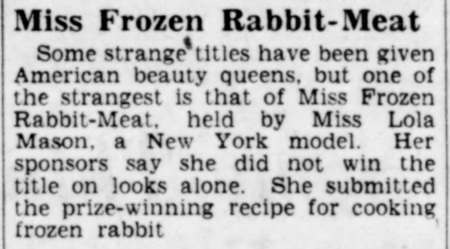
Daily Telegraph - Oct 26, 1957
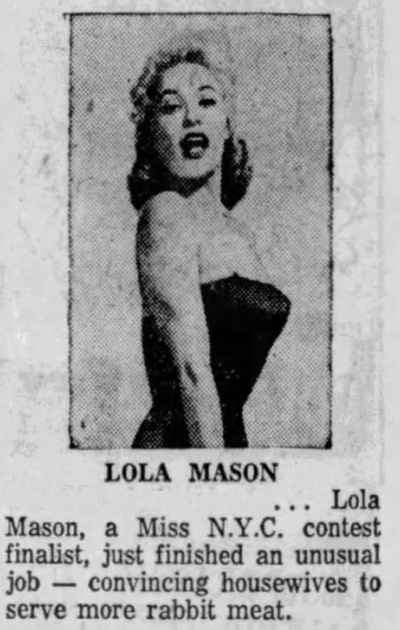
Longview Daily News - Mar 31, 1958
Below, part of the marketing campaign to get Americans to eat more rabbit.
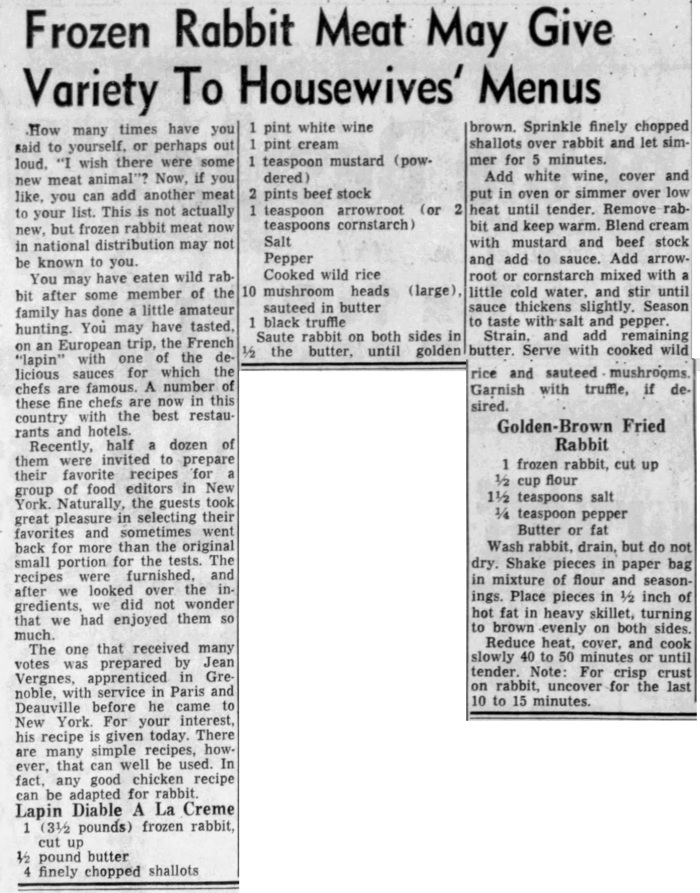
Baltimore Evening Sun - July 18, 1957
Posted By: Alex - Sat Feb 17, 2024 -
Comments (10)
Category: Awards, Prizes, Competitions and Contests, Food, 1950s

| Who We Are |
|---|
| Alex Boese Alex is the creator and curator of the Museum of Hoaxes. He's also the author of various weird, non-fiction, science-themed books such as Elephants on Acid and Psychedelic Apes. Paul Di Filippo Paul has been paid to put weird ideas into fictional form for over thirty years, in his career as a noted science fiction writer. He has recently begun blogging on many curious topics with three fellow writers at The Inferior 4+1. Contact Us |




